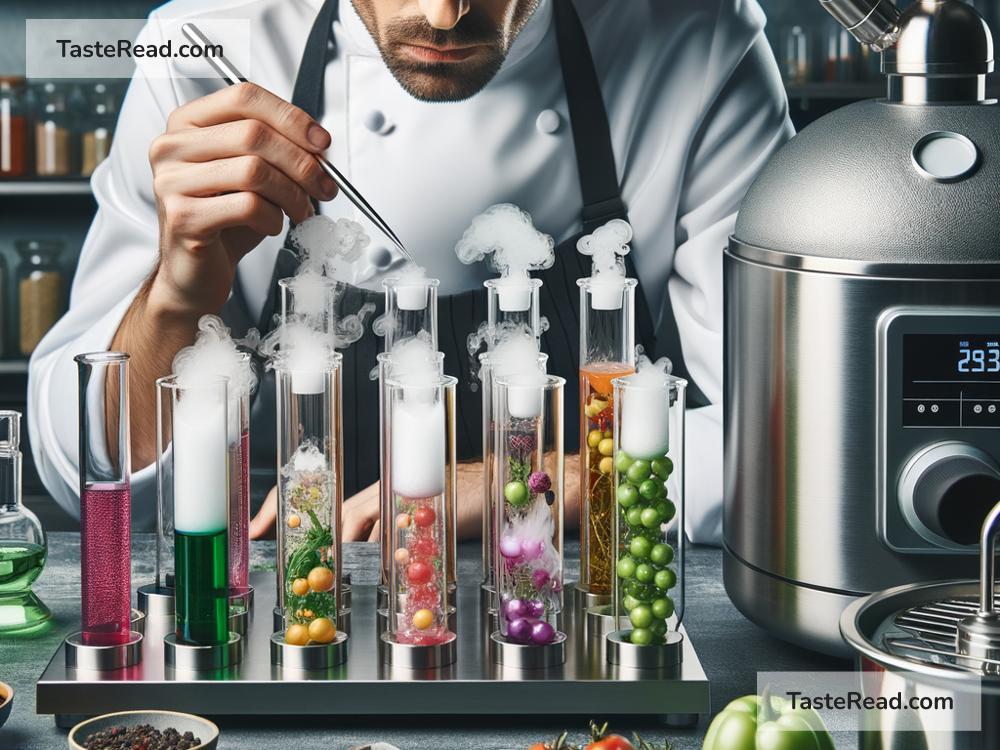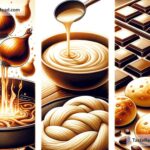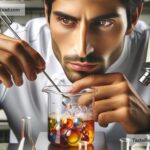The Science of Cooking with Physical Chemistry: Techniques and Tips
Cooking is not just an art; it is also a science. When you bake bread, boil pasta, or sear a steak, physical chemistry is happening right in your kitchen. This branch of science explains how heat, molecules, and reactions work together to transform raw ingredients into delicious meals. Understanding the science behind cooking can help you improve your techniques and create tastier results. In this article, we’ll explore key concepts in physical chemistry that apply to cooking and provide practical tips to upgrade your skills.
What Is Physical Chemistry?
Physical chemistry deals with how matter behaves on a molecular and atomic level, often focusing on how energy affects these changes. In cooking, you’re essentially using heat (thermal energy) to trigger chemical reactions in food. These reactions change the texture, flavor, and appearance. For example, when you cook an egg, heat causes proteins in the egg white to unravel and bond together, turning the transparent liquid into a solid white mass. This process is called denaturation, and it’s just one of the many chemical transformations that happen in cooking.
Key Physical Chemistry Concepts in Cooking
1. Heat Transfer
Cooking relies on heat to make food safe, edible, and flavorful, but how heat gets into your food is also critical. Heat is transferred in three main ways:
-
Conduction: Direct heat transfer through contact. For example, a steak sizzling on a hot pan cooks via conduction.
-
Convection: Heat circulating in a liquid or gas. For example, boiling water cooks pasta by convection.
-
Radiation: Heat that travels through waves, like when you broil food in the oven.
Tip: Want evenly cooked food? Use cooking methods that evenly distribute heat, like convection ovens or stirring soups while boiling.
2. Maillard Reaction
Have you ever wondered why grilled meat or roasted vegetables taste so good? It’s because of the Maillard reaction. This chemical reaction occurs when proteins and sugars in food interact at high temperatures (around 300–350°F). The process forms hundreds of compounds that enhance flavors and create a golden-brown color.
Tip: To boost the Maillard reaction, make sure you dry the surface of your food (like a steak) before cooking. Excess moisture will slow the reaction by cooling the surface.
3. Caramelization
Caramelization is the process of heating sugar to break it down and create rich, sweet flavors. It’s why caramelized onions taste so delicious or why baked goods have a golden crust.
Tip: Low and slow heat works best for caramelization. For onions, add a bit of fat (like butter or oil) and cook them at a low temperature for an extended period.
4. Phase Changes
Phase changes occur when a substance transitions between solid, liquid, and gas. For example, the water in dough turns into steam when heated, helping bread rise and become fluffy. Similarly, freezing liquids or making ice cream involves turning a liquid into a solid.
Tip: When baking, don’t skip preheating your oven. Having the right temperature helps phase changes occur at the right time, ensuring your dish turns out perfectly.
5. Emulsions
Emulsions are mixtures of liquids that normally don’t combine, like oil and water. These are common in recipes like mayonnaise or salad dressings. Physical chemistry helps us understand how emulsifiers, such as egg yolks, work to bind these opposing liquids together.
Tip: To create a stable emulsion, add your ingredients gradually while whisking consistently. Patience is key!
6. Protein Denaturation
Proteins are long chains of molecules that fold into specific structures. When exposed to heat, acid, or salt, these structures unravel (denature). This is the reason why eggs solidify when cooked or why meat becomes firmer when it’s grilled.
Tip: If you want tender meat, cook it slowly at a lower temperature. High heat can cause proteins to tighten too much, making your meat tough.
7. Solubility and Flavor Extraction
Solubility is all about how substances dissolve. For instance, salt dissolves in water, and coffee grounds release flavor compounds in hot water. Physical chemistry helps explain why some flavors are extracted better in water, while others require fat or alcohol.
Tip: To extract maximum flavor, match your cooking medium with the ingredient. Water-based methods work for tea or broth, while oil helps release aromatic compounds in spices.
8. Crystallization
Crystallization occurs when molecules arrange in a structured pattern. This is critical for making candy or ice cream. For example, sugar crystals form when making fudge, and controlling the size of these crystals determines its texture.
Tip: For smoother candies, cool your mixture slowly and stir frequently to avoid large, gritty sugar crystals.
Why Understanding Science Improves Cooking
Knowing the science behind cooking helps you make better decisions in the kitchen. You can control temperatures, use the right techniques, or troubleshoot recipes that don’t turn out well. For example, if your bread doesn’t rise, you’ll know it could be because you didn’t provide the yeast with warm conditions to produce carbon dioxide.
Final Thoughts
Cooking isn’t just about following recipes; it’s about understanding how ingredients work and transform. Physical chemistry gives us valuable insights into these processes, making us better cooks. By mastering heat transfer, chemical reactions, and phase changes, you can unlock the secrets of flavor, texture, and aroma. So, the next time you’re in the kitchen, think of it as your personal science lab, and experiment with confidence. Happy cooking!


